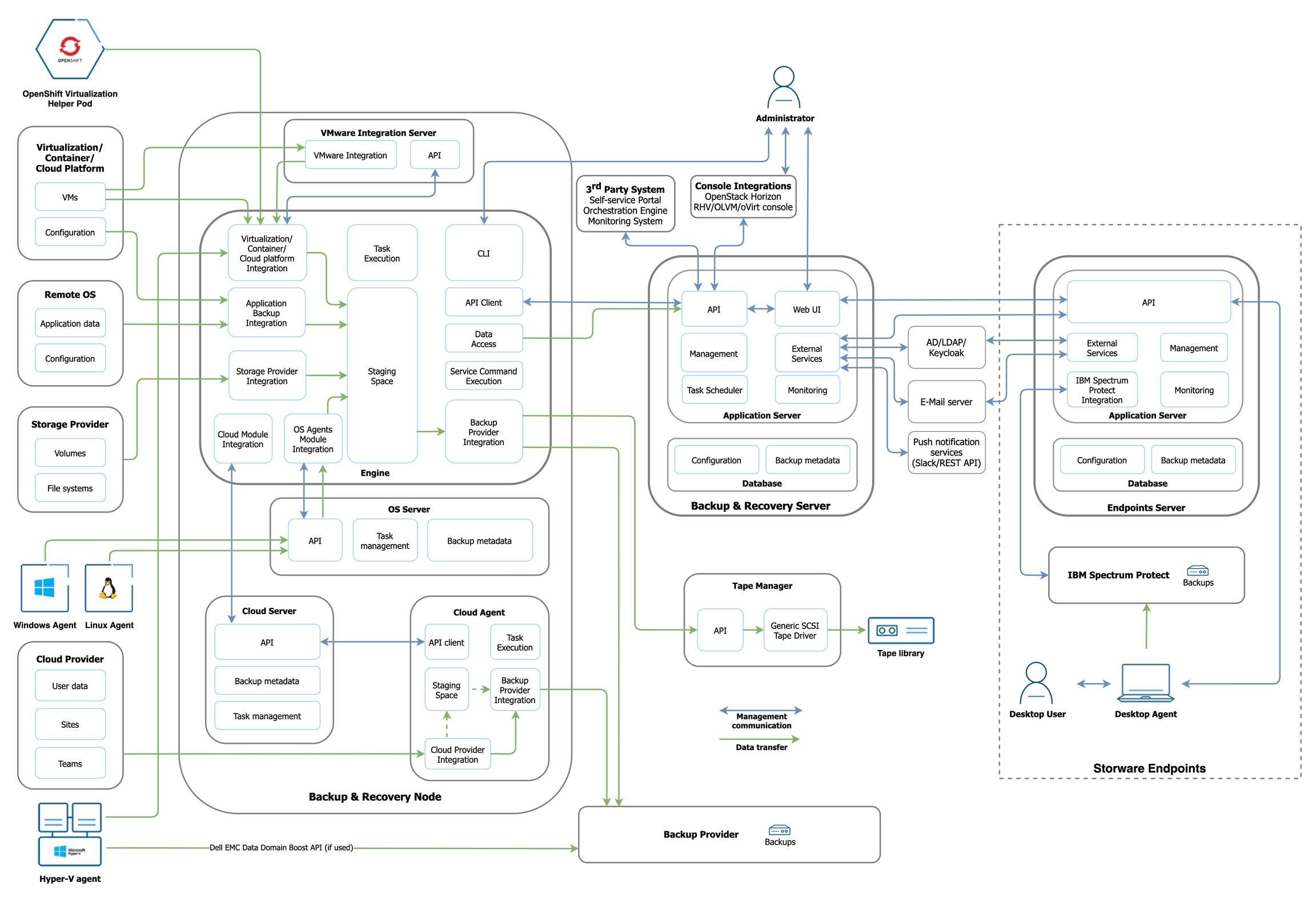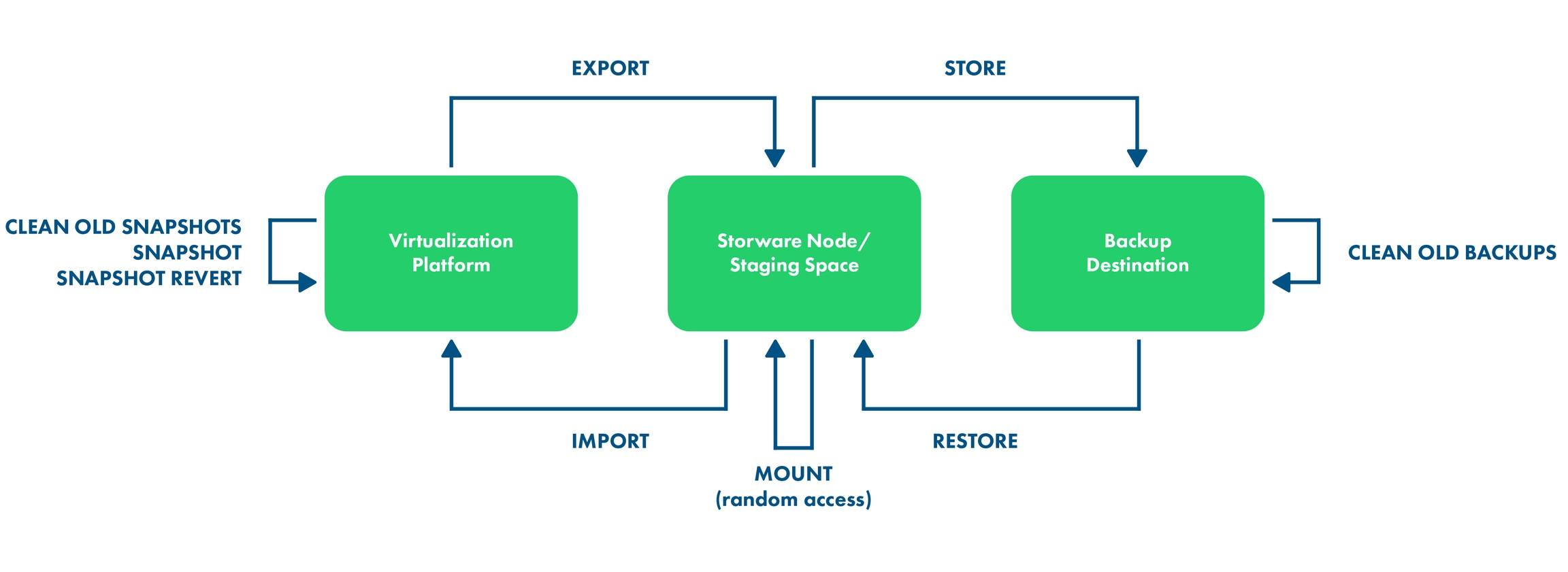Components and Architecture
The vPlus consists of the following components:
Server
This component manages the entire solution. The server consists of the MariaDB database to track different information about the system such as configuration, permissions, and various metadata. Typically, there is one vPlus server that can work and manage with multiple nodes. The server provides the administrative web UI.
Node
This component is used to manage data movement. The component is responsible among others for performing operations like backup, restore, and mount. Multiple nodes can be connected and managed by the same vPlus server. Depending on the type of protected systems and data, multiple nodes can be deployed for example for scalability.
The node consists of the following subcomponents:
Cloud agent
Data mover that performs backups and restores operations for M365.
Cloud server
This component is responsible for managing the metadata for M365 backup and restoring operations. The cloud server is using SQLite databases to track the metadata of M365 objects. The metadata databases are stored together with the data on the backup destination.
Architecture
The following diagram illustrates the system data flow:

Components deployment
vPlus components (server, node, and endpoints server) can be installed on the same host.
The server can be installed on a physical machine or as a virtual machine - externally deployed nodes require network connectivity to the server and backup destinations.
Nodes may be deployed as physical or virtual systems, unless the selected backup strategy requires the node to be installed as a virtual machine on a Hypervisor Cluster (especially with the "disk attachment" export mode).
For detailed deployment scenarios, see the following sections:
Typical workflows
There are several typical workflows in vPlus and they result in a set of tasks.

Backup
Export - a task that creates a backup or snapshot and exports data to the staging space
Store - a task that moves data to the backup destination
Restore to filesystem
Restore - a task that gets data from a backup provider and puts data in the staging space
Restore to a virtualization platform
Restore - a task that gets data from a backup provider and puts data in the staging space (if it is a full backup that is being restored residing on the file system backup provider - this task just informs where files are waiting for import task)
Import - a task that imports data to the virtualization platform and recreates VM
Mount (file-level restore)
Restore - a task that gets data from a backup provider and puts data in the staging space (if it is a full backup that is being restored residing on the file system backup provider - this task just informs where files are waiting for the mounting task)
Mount - mounts backup on the vPlus Node and either allows user to browse files or exposes backup over iSCSI, so that remote iSCSI initiator can access it
Snapshot
A task creates a local persisted snapshot of a virtual machine in the hypervisor environment according to a policy that was assigned to the machine. Snapshot retention is managed by the policy settings.